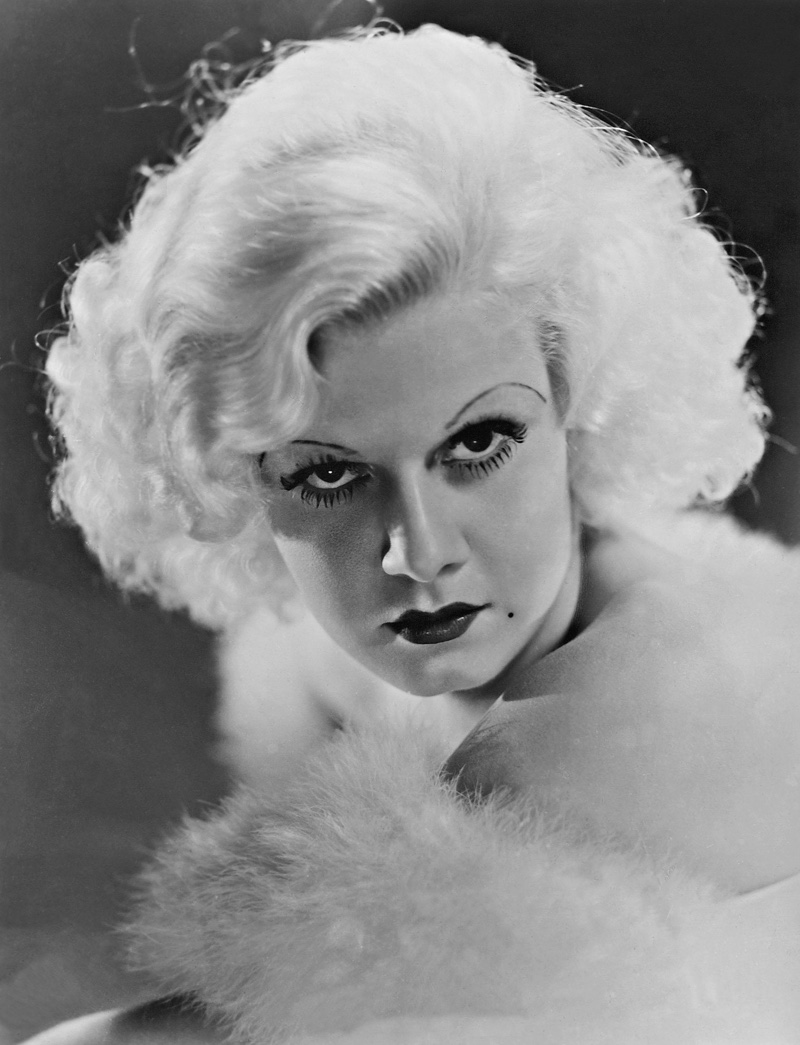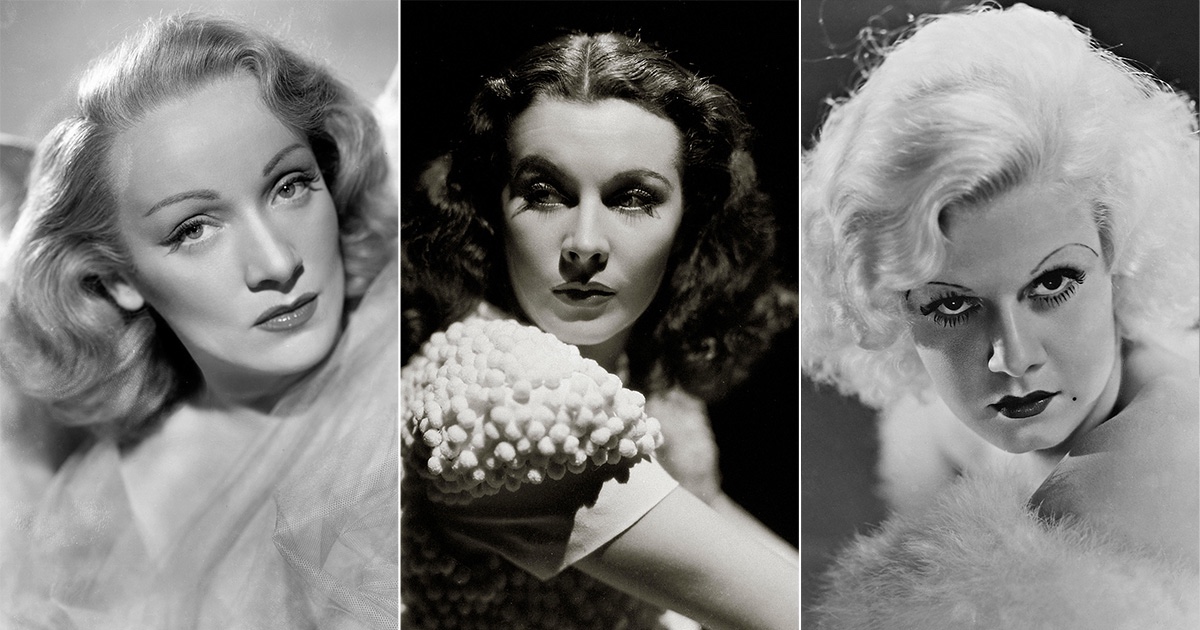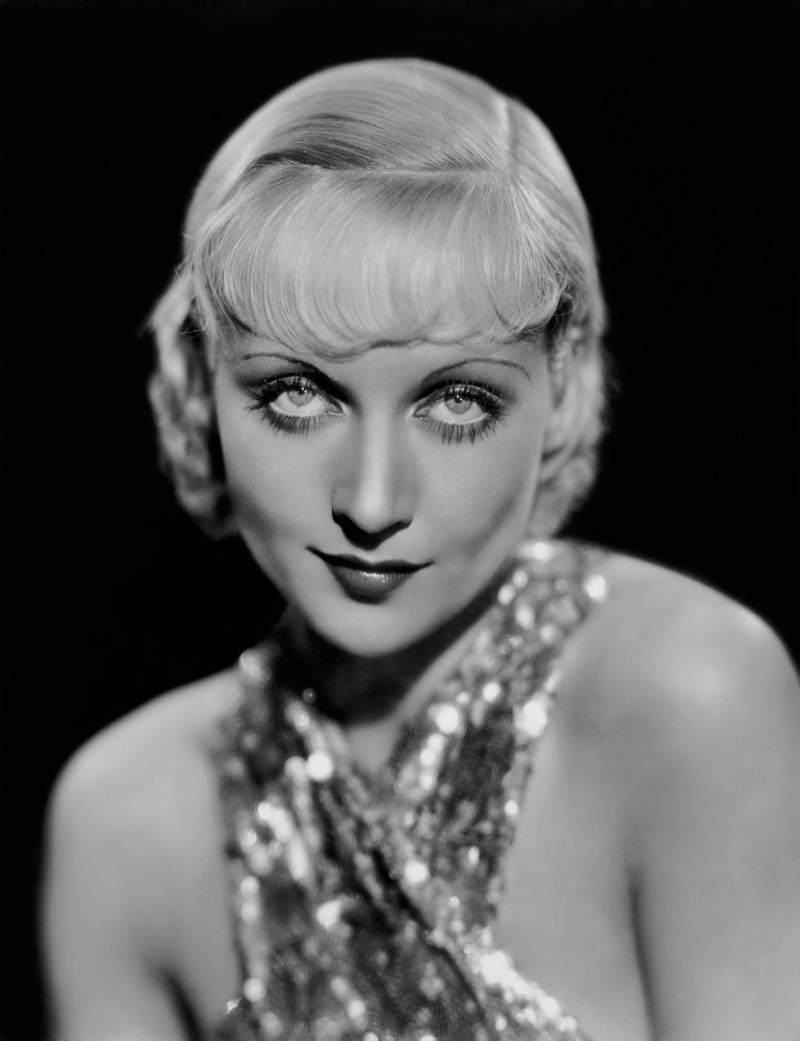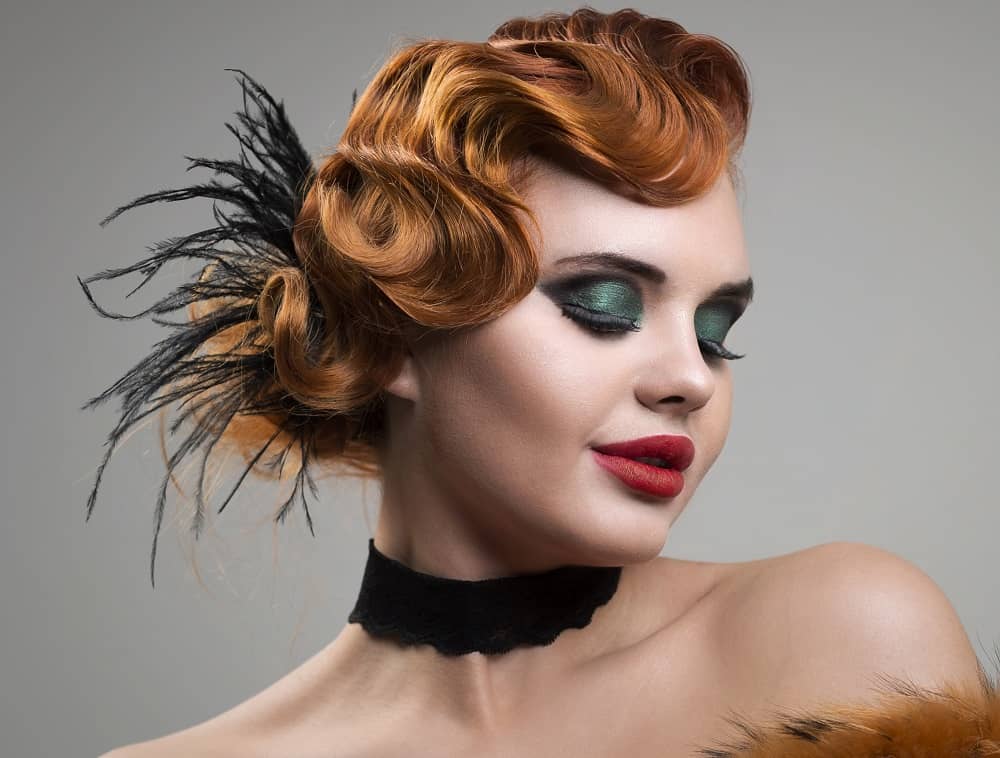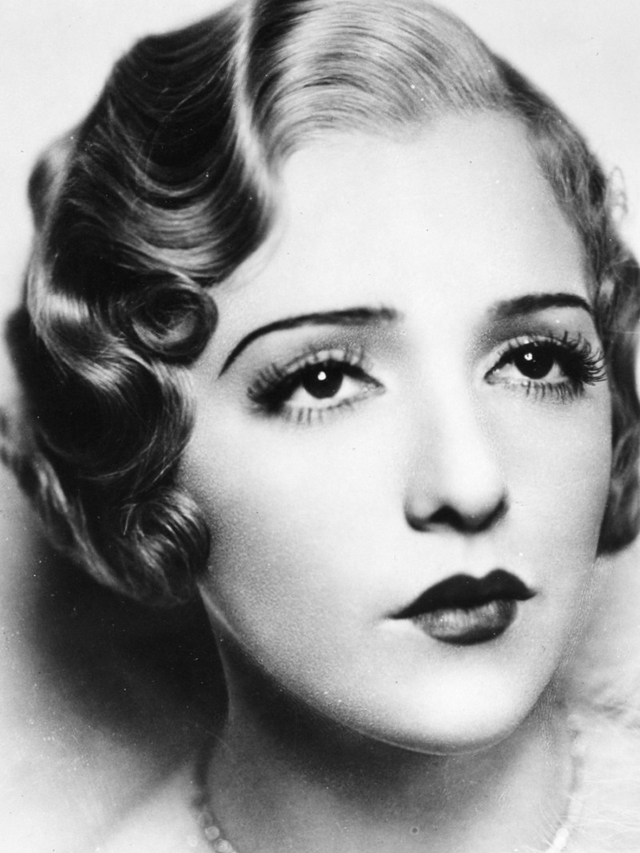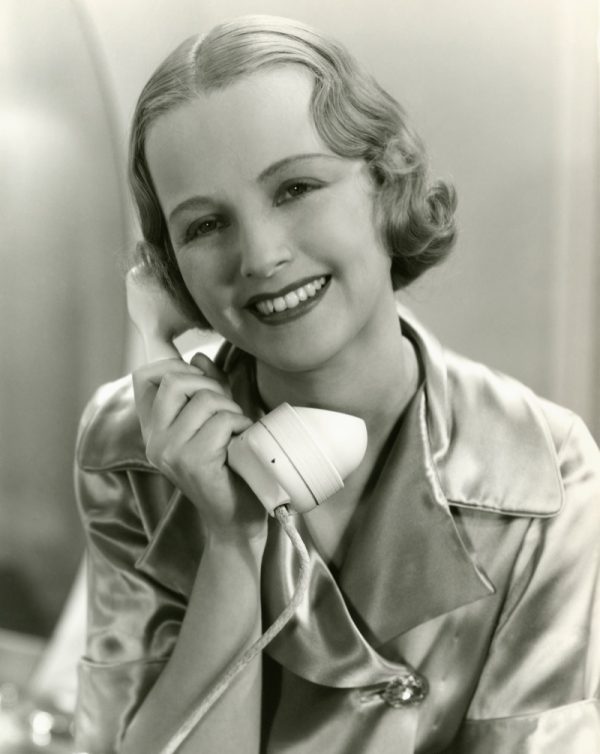
The 1930s, a decade often overshadowed by the roaring twenties and the tumultuous forties, carved out its own distinct identity in the annals of fashion and beauty. Amidst the economic hardships of the Great Depression, a new aesthetic emerged – one of refined elegance, understated luxury, and sophisticated allure. Nowhere was this more evident than in the hairstyles of the era, particularly the iconic 1930s waves. Moving away from the sharp, boyish bobs of the flapper era, the 1930s embraced a softer, more romantic femininity, epitomized by flowing, sculpted waves that framed the face with unparalleled grace.
This article delves into the captivating world of 1930s waves hairstyles, exploring their evolution, defining characteristics, popular variations, the techniques used to create them, and their lasting cultural impact. From the silver screen sirens who popularized these looks to the everyday women who adapted them, the 1930s wave remains a timeless symbol of glamour and resilience.
The Evolution from the Roaring Twenties
The transition from the 1920s to the 1930s marked a significant shift in women’s fashion and, consequently, their hair. The rebellious spirit of the flapper, with her short, often severe bob, cloche hat, and daring independence, began to wane. As the decade turned, there was a collective yearning for a more mature, polished image. Hair started to grow longer, often reaching shoulder length or slightly beyond, allowing for greater versatility and the creation of more intricate styles.
While finger waves and Marcel waves were certainly present in the 1920s, they were typically more rigid, plastered close to the head, and often accentuated the sharpness of the bob. In the 1930s, these techniques were reinterpreted to produce a softer, more voluminous, and flowing effect. The goal was no longer to flatten the hair but to give it movement, body, and a luxurious sheen. Hollywood played an instrumental role in this transformation, as stars like Jean Harlow, Greta Garbo, Carole Lombard, and Marlene Dietrich became the ultimate style arbiters, showcasing these exquisite waves on the silver screen and inspiring millions.
Defining Characteristics of 1930s Waves
Several key features distinguish 1930s waves from their predecessors and successors, contributing to their unique and enduring appeal:
- Softness and Flow: Unlike the rigid, shellacked waves of the 1920s, 1930s waves were characterized by their gentle undulations and natural movement. The waves were less about being perfectly sculpted and more about creating a soft, rippling effect that flowed gracefully around the face and shoulders.
- Deep Side Parting: A quintessential element of 1930s hairstyles was the deep side part. This created an asymmetrical balance, allowing one side of the hair to sweep across the forehead in a dramatic wave, often creating a "peek-a-boo" effect, while the other side was pulled back or tucked behind the ear.
- Volume at the Crown: While not as voluminous as later decades, 1930s waves often featured a subtle lift at the crown. This added height and sophistication, preventing the style from appearing flat and enhancing the overall elegant silhouette.
- S-Shaped Waves: The signature of the 1930s wave was the distinct S-shape. These sinuous curves were meticulously crafted to frame the face, often starting just above the eyebrow and cascading down the sides, creating a flattering contour.
- Polished Finish: Hair was typically immaculately groomed, with a high shine. Setting lotions, brilliantine, and hair creams were used to achieve a smooth, glossy finish, reflecting the era’s emphasis on meticulous presentation.
- Versatile Lengths: While shoulder-length hair was common, 1930s waves were adaptable to various lengths. Shorter bobs could still feature soft waves, while longer hair allowed for more dramatic, cascading styles that exuded Hollywood glamour.
Popular Variations and Iconic Styles
The 1930s saw a range of wave styles, each contributing to the decade’s diverse beauty landscape:
- Soft Finger Waves: While a carryover from the 1920s, finger waves in the 1930s were less severe. They were created with the fingers and a comb on wet hair, forming horizontal or diagonal S-shaped waves close to the scalp. The 1930s version allowed for more softness and volume once dried and brushed out, moving away from the "helmet" look.
- Marcel Waves (Softer Interpretation): Named after their inventor, Marcel Grateau, Marcel waves were created using a heated curling iron. In the 1930s, the technique was refined to produce looser, more natural-looking waves rather than the tight, crimped effect of earlier decades. This method offered greater durability and was popular for evening wear.
- The "Pageboy" or "Turned Under" Wave: As the decade progressed, a style emerged where the ends of the hair were gently curled under, creating a soft, rounded shape. This "pageboy" effect, often combined with soft waves at the top, offered a neat and polished look that was both sophisticated and practical.
- Glamorous Cascading Waves: For evening events and the silver screen, hair was often styled into more dramatic, flowing waves that cascaded down the shoulders. Stars like Greta Garbo and Carole Lombard perfected this look, often with a deep side part and one side swept back, allowing the waves to fall luxuriously over the other shoulder. These were often achieved through a combination of pin curls and careful brushing.
- The "Peek-a-Boo" Wave: While more famously associated with Veronica Lake in the early 1940s, the precursor to the "peek-a-boo" style was present in the 1930s. A deep side part would allow a large, soft wave to fall partially over one eye, adding an air of mystery and allure.
- Jean Harlow’s Platinum Waves: Perhaps one of the most iconic looks of the decade, Jean Harlow’s platinum blonde hair styled in soft, voluminous waves became synonymous with 1930s glamour. Her signature look was often characterized by a softer, almost ethereal quality, proving that waves could be both elegant and overtly sensual.
Techniques and Tools for Creating 1930s Waves
Achieving the perfect 1930s wave required skill, patience, and the right tools. The primary methods involved setting the hair while wet and allowing it to dry, then carefully brushing it out to create the desired effect.
- Finger Waving: This was the most common and accessible technique. Hair was thoroughly wet, often with a setting lotion. Using a fine-toothed comb, sections of hair were pressed flat against the scalp, and the fingers were used to create the S-shaped ridges. Duckbill clips were then placed along the ridges to hold the waves in place while the hair dried. Once completely dry, the clips were removed, and the hair was gently brushed to soften the waves and add shine.
- Pin Curling: For more defined waves and curls, pin curling was essential. Small sections of damp hair were rolled into flat curls (pin curls) and secured against the scalp with bobby pins. These curls could be set in various patterns to achieve different wave effects. After drying, the pins were removed, and the curls were carefully brushed out with a soft bristle brush to merge them into soft, flowing waves. This brushing-out process was crucial for transforming tight curls into elegant waves.
- Marcel Iron: For those seeking a more durable or precise wave, the heated Marcel iron was still in use. Unlike modern curling irons, the Marcel iron required skill to manipulate, as it consisted of two parts that were heated externally. It allowed for the creation of deeper, more lasting waves, particularly for evening styles.
- Setting Lotions and Brilliantine: Products were vital for hold and shine. Setting lotions (often diluted with water) were applied to wet hair to provide a light hold and help the waves maintain their shape. Brilliantine, a perfumed oil or pomade, was applied to dry hair to add gloss and tame flyaways, contributing to the polished finish.
- Hairnets and Scarves: To preserve the meticulously styled waves, women often slept with hairnets or silk scarves wrapped around their heads. This helped to keep the waves intact and reduce frizz, ensuring the style lasted longer.
Cultural Impact and Enduring Legacy
The 1930s waves hairstyles were more than just a trend; they were a reflection of the era’s spirit and a symbol of resilience. In a decade marked by economic hardship, these elegant styles offered a sense of aspirational glamour and a much-needed escape. Hollywood, with its dazzling stars, played a pivotal role in disseminating these looks, making them accessible and desirable to women across all social strata. Magazines and beauty parlors provided instructions and services, allowing everyday women to emulate the sophisticated styles seen on screen.
The emphasis on polished presentation and refined femininity offered a contrast to the more casual and rebellious attitudes of the previous decade. These waves represented a return to classic beauty, an enduring appeal that transcended the immediate circumstances of the time.
Today, 1930s waves continue to inspire. They are a popular choice for red carpet events, bridal hairstyles, and period-themed fashion. Modern interpretations often incorporate elements of the classic wave with contemporary techniques, resulting in looks that are both vintage and fresh. The timeless elegance, the flattering frame they provide for the face, and their undeniable touch of old Hollywood glamour ensure that 1930s waves hairstyles will forever remain a beloved and iconic chapter in the history of beauty. They stand as a testament to an era that, despite its challenges, found beauty in grace, sophistication, and the art of subtle allure.
